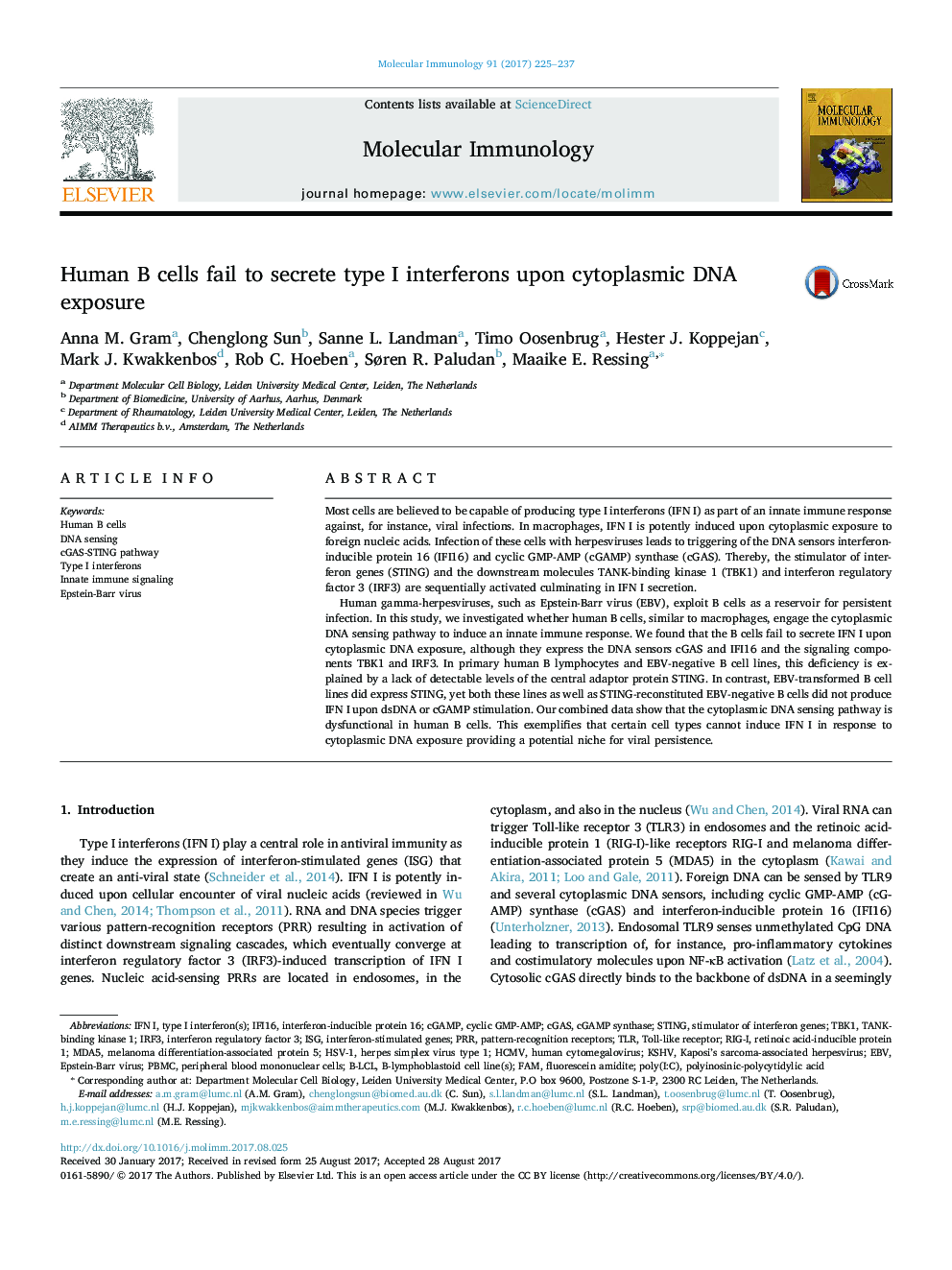| Article ID | Journal | Published Year | Pages | File Type |
|---|---|---|---|---|
| 5591865 | Molecular Immunology | 2017 | 13 Pages |
Abstract
Human gamma-herpesviruses, such as Epstein-Barr virus (EBV), exploit B cells as a reservoir for persistent infection. In this study, we investigated whether human B cells, similar to macrophages, engage the cytoplasmic DNA sensing pathway to induce an innate immune response. We found that the B cells fail to secrete IFN I upon cytoplasmic DNA exposure, although they express the DNA sensors cGAS and IFI16 and the signaling components TBK1 and IRF3. In primary human B lymphocytes and EBV-negative B cell lines, this deficiency is explained by a lack of detectable levels of the central adaptor protein STING. In contrast, EBV-transformed B cell lines did express STING, yet both these lines as well as STING-reconstituted EBV-negative B cells did not produce IFN I upon dsDNA or cGAMP stimulation. Our combined data show that the cytoplasmic DNA sensing pathway is dysfunctional in human B cells. This exemplifies that certain cell types cannot induce IFN I in response to cytoplasmic DNA exposure providing a potential niche for viral persistence.
Keywords
HCMVIFI16B-LCLcGAMPMDA5ISGPBMCKSHVRIG-IIRF3TBK1cyclic GMP-AMPHSV-1fluorescein amiditePRRTLRCgasFAMDNA sensingEBVType I interferonsTANK-binding kinase 1Toll-like receptorHuman B cellsperipheral blood mononuclear cellsHuman cytomegalovirusInnate immune signalingInterferon regulatory factor 3stimulator of interferon genesSTINGEpstein-Barr virusHerpes simplex virus type 1Kaposi’s sarcoma-associated herpesvirusMelanoma Differentiation-Associated protein 5poly(I:C)polyinosinic-polycytidylic acidInterferon-stimulated genespattern-recognition receptors
Related Topics
Life Sciences
Biochemistry, Genetics and Molecular Biology
Molecular Biology
Authors
Anna M. Gram, Chenglong Sun, Sanne L. Landman, Timo Oosenbrug, Hester J. Koppejan, Mark J. Kwakkenbos, Rob C. Hoeben, Søren R. Paludan, Maaike E. Ressing,
